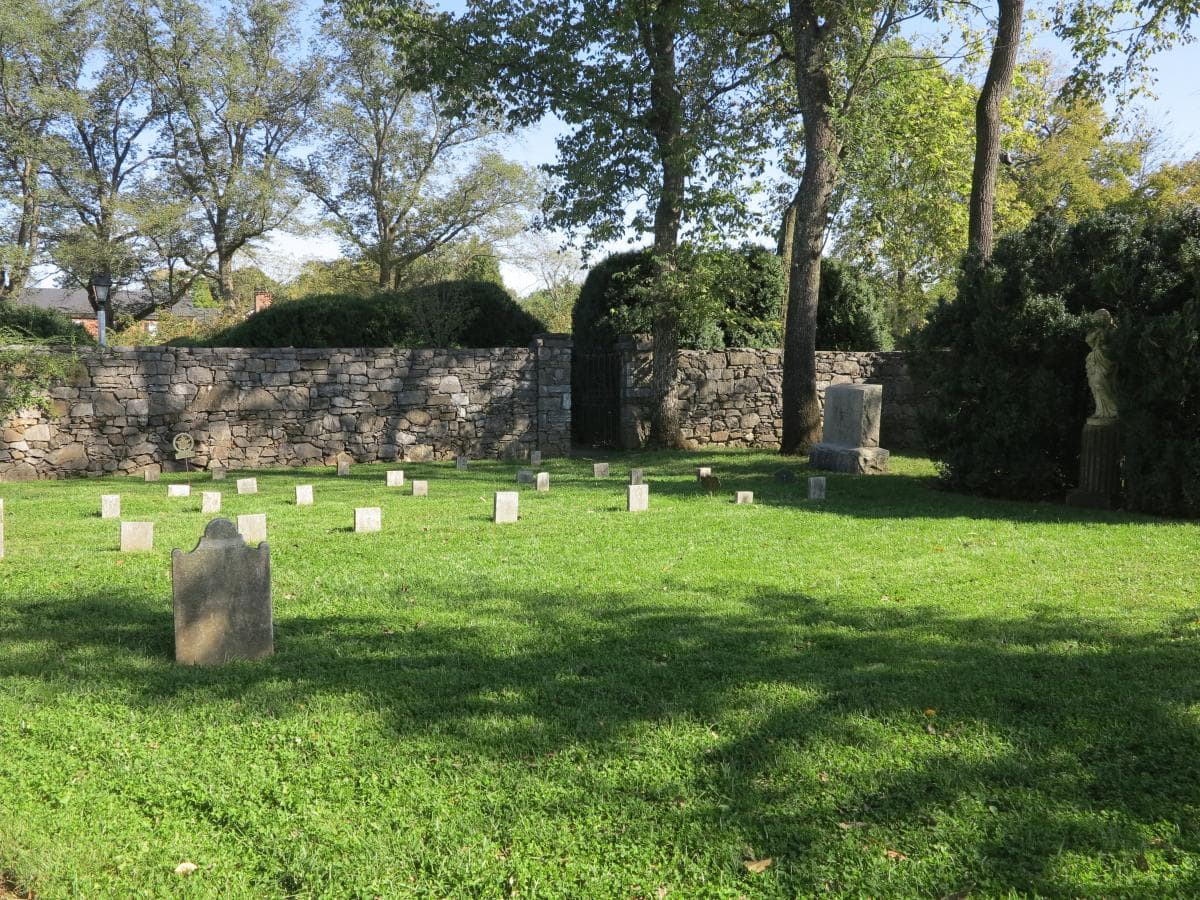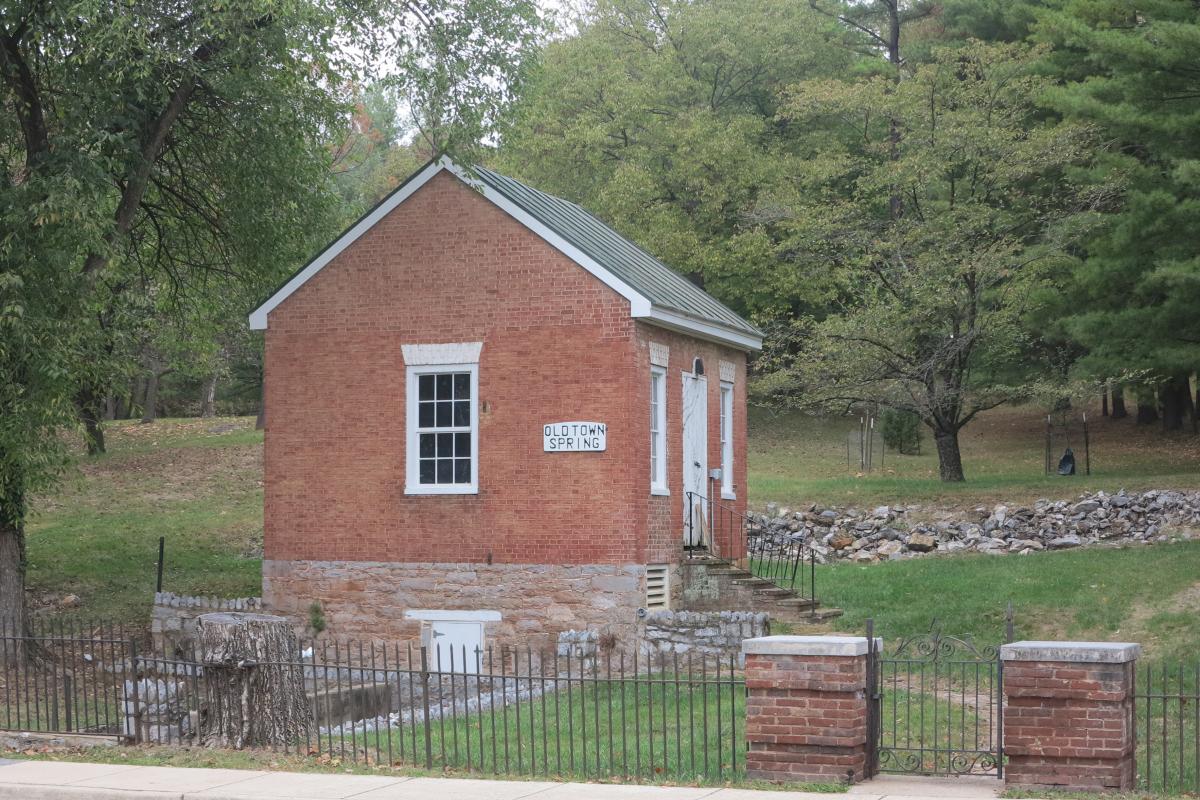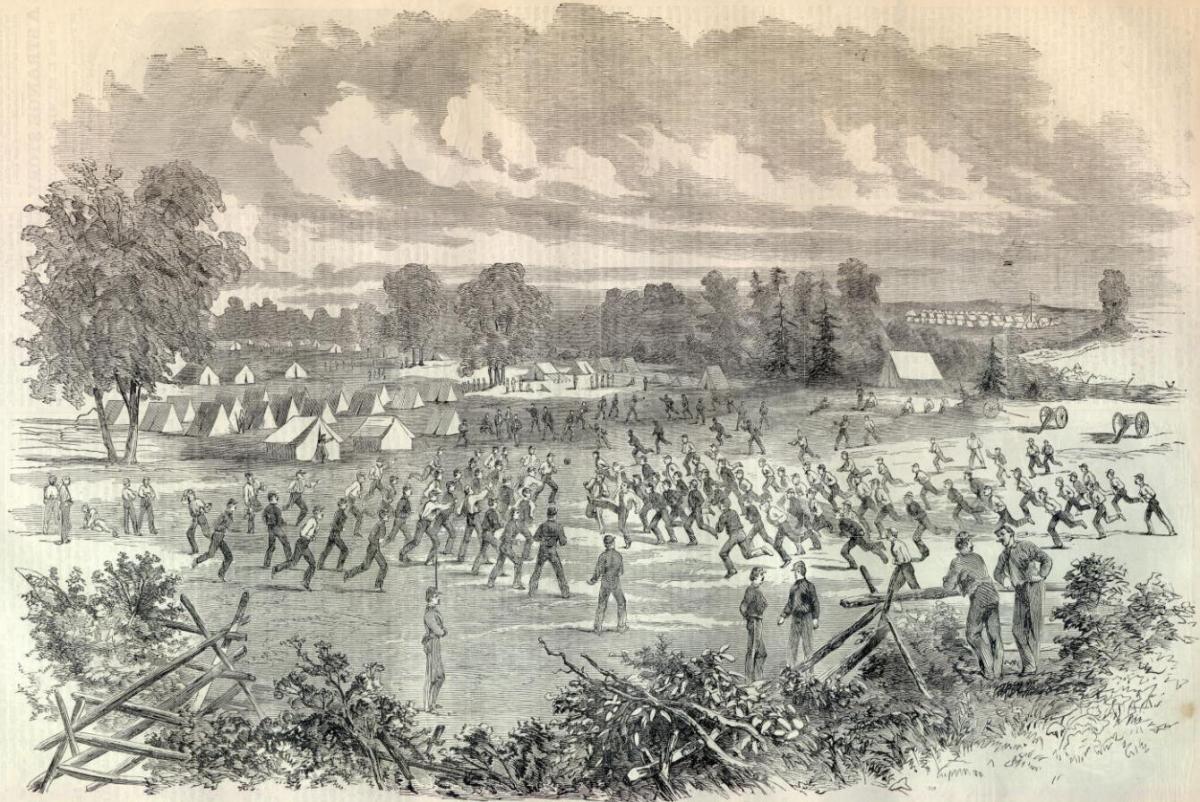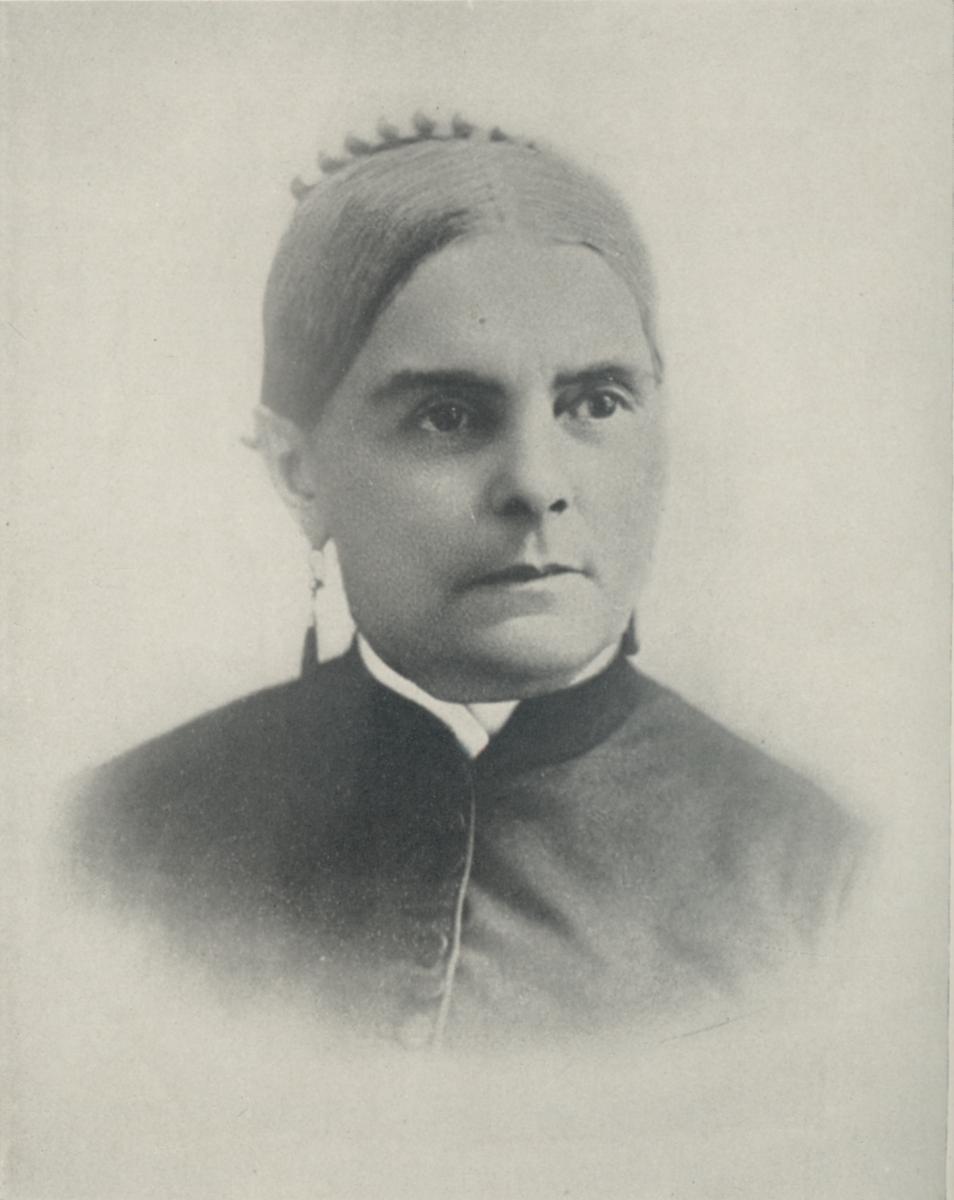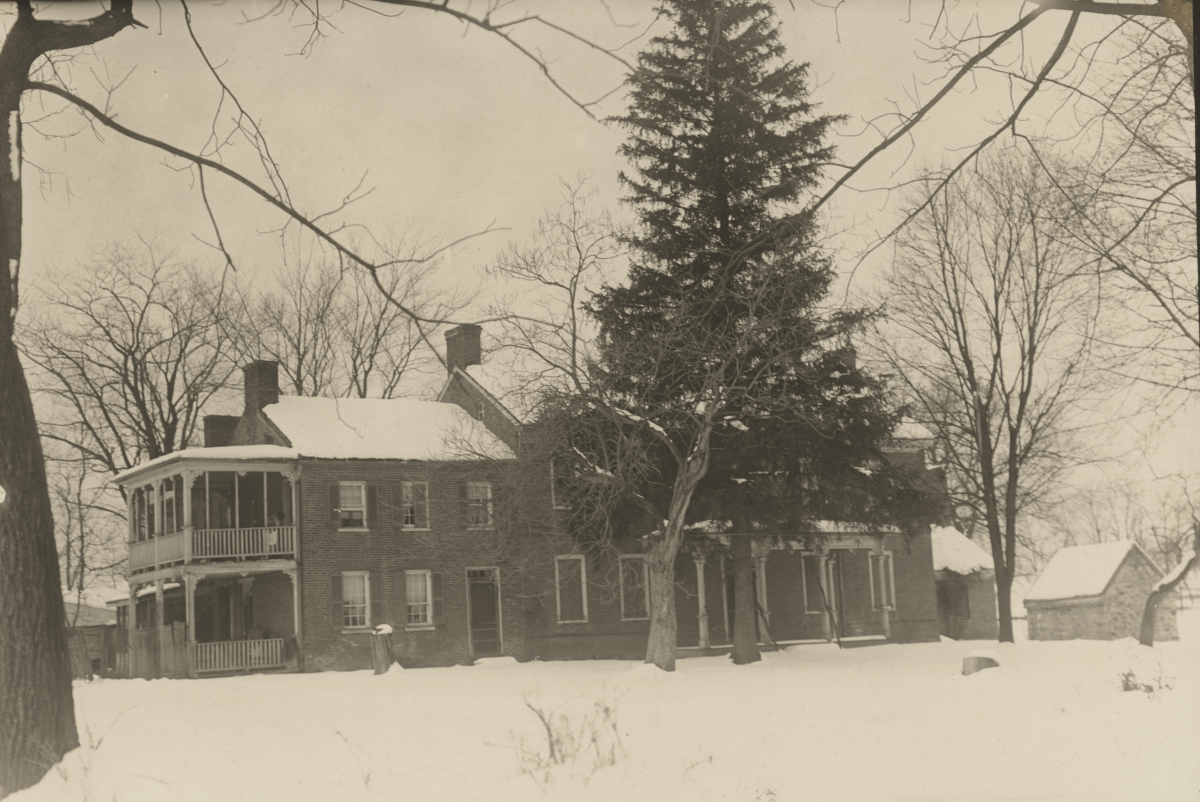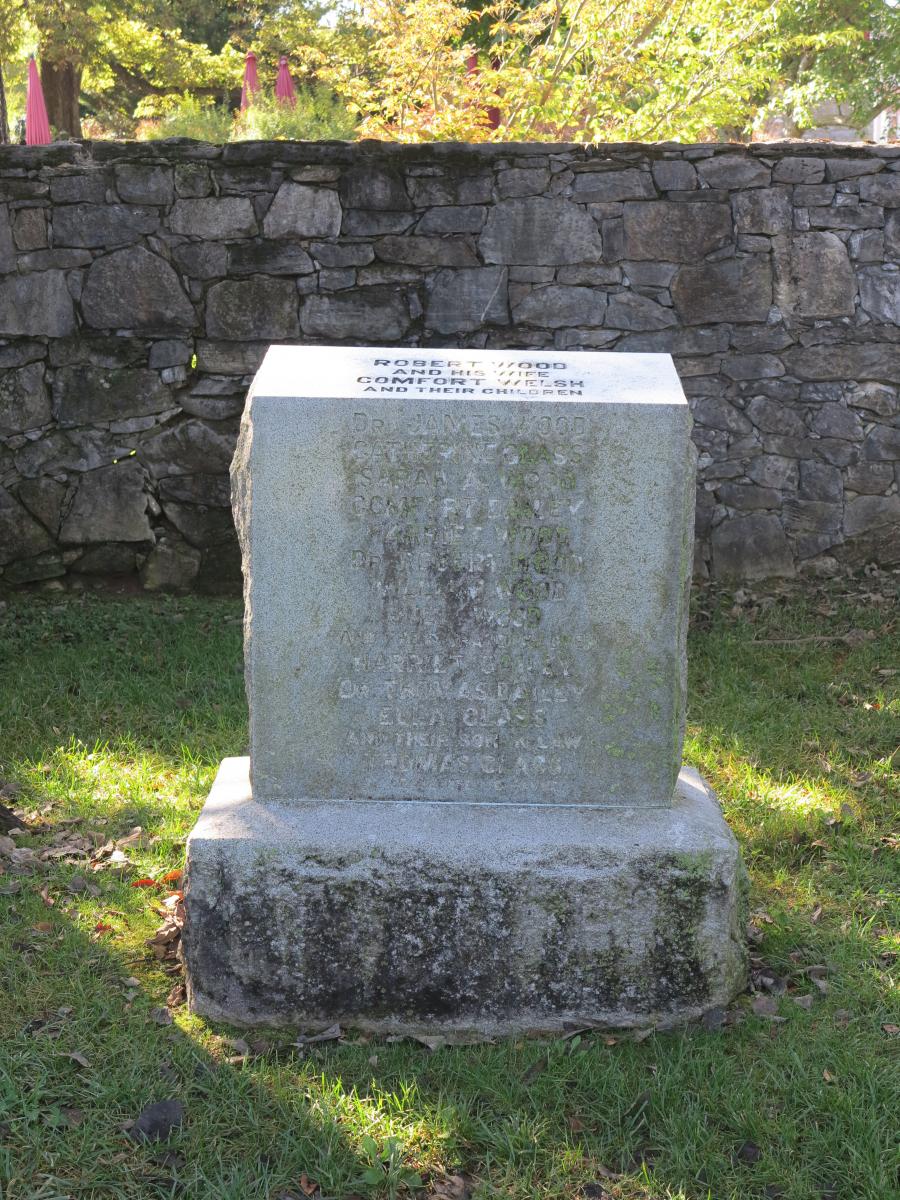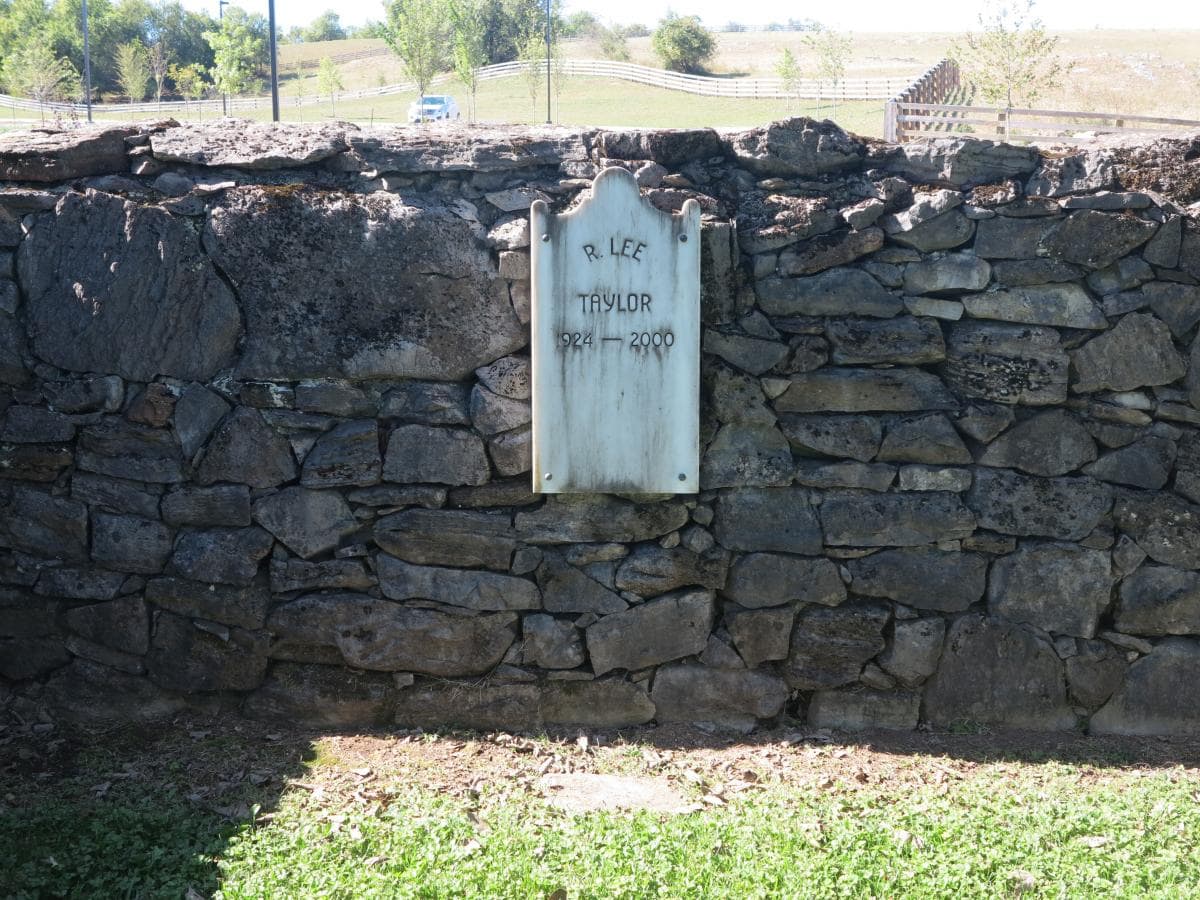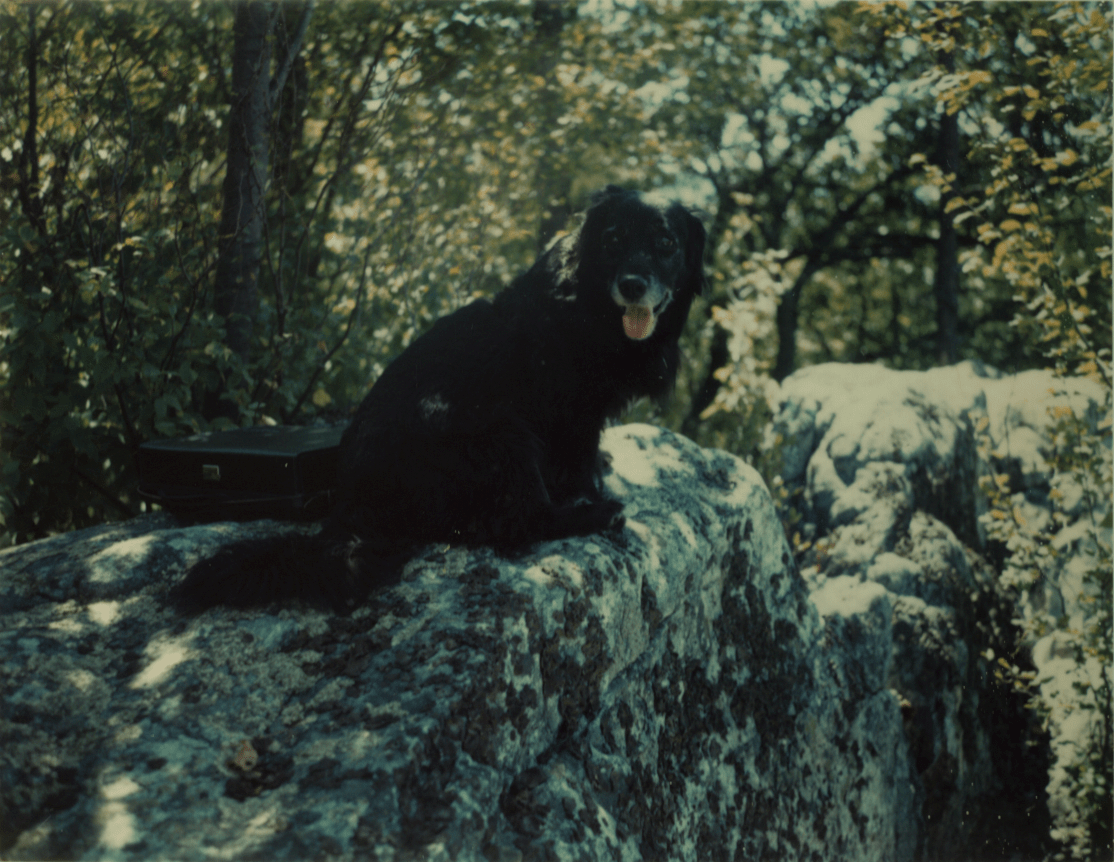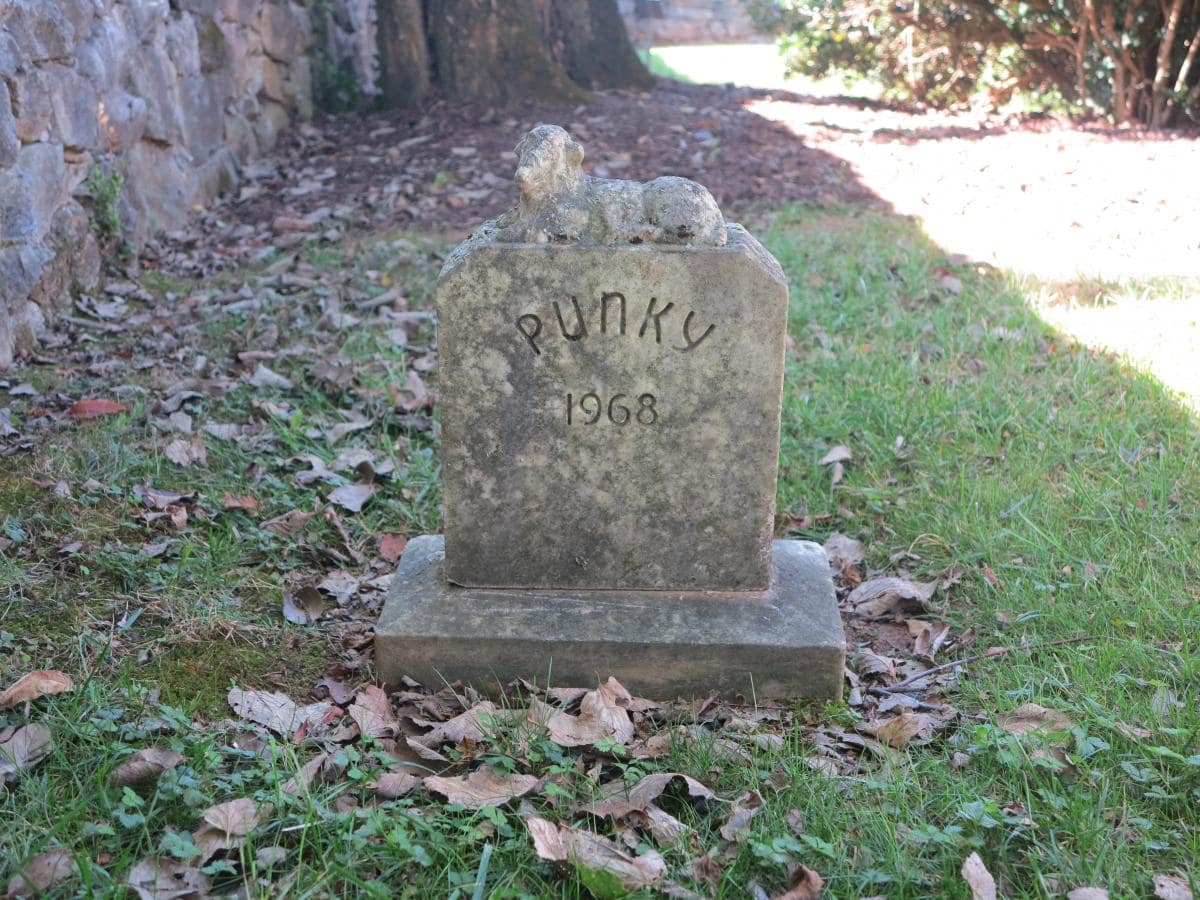Cemetery. Graveyard. God’s Acre. Burial ground. We have many names to describe the places in which our loved ones rest eternally, and just as many opinions about how creepy (or benign) they are.
By Curator of Collections Nick Powers
For some people—particularly around this time of year as Halloween approaches—cemeteries are the frightening abodes of the dead.
For others, myself included, they are serene spots where people can connect with the past. In many cases, they are repositories of historical information that might not be available anywhere else, like the birth, marriage, and death dates of individuals. The rise in popularity of websites like FindAGrave.com—where grave markers halfway across the country are only a mouse click or phone swipe away—attests to how important this information is to our collective memory. More and more nowadays, there’s an app for that!
Tucked near the entrance to the Glen Burnie Gardens is just such a spot, a stone enclave where generations of the Wood and Glass families—and a few select others—rest peacefully. While today the over two-hundred-year-old cemetery presents a tranquil setting, that was not always the case.
During the Civil War, both Union and Confederate forces occupied the Glen Burnie grounds as Winchester frequently changed hands. The property served both practical and military purposes for the occupying armies. The Old Town Spring on the north side of Amherst Street—one of three within the bounds of the original 1737 James Wood land grant—provided clean water to both soldiers and horses alike. Glen Burnie’s proximity to the old North Western Turnpike (today’s U.S. Route 50) also allowed each army to keep a watchful eye on the strategic link between Winchester and Romney (now West Virginia).
Military occupation of Glen Burnie began early in the war. In June 1861—only a month before the First Battle of Manassas—Marylanders sympathetic to the Southern cause camped on the grounds and formed the First Maryland Infantry, Confederate States of America (CSA).
As the war dragged on, both the Confederate and Union armies pilfered from the farm’s resources with impunity. Several women diarists living in Winchester during the Civil War were first-hand witnesses to the devastation that visited Glen Burnie. On December 27, 1862, Laura Lee (1823-1902) recorded that the Union Army under General Robert Milroy had “laid waste…to Mr. Wood’s places, tearing down every outhouse and fence, breaking into the cellars and pantries, and carrying off everything that they had for their winter provisions.”[i]
Earlier in the year another diarist, Cornelia Peake McDonald (1822-1909)—who lived across Amherst Street at Hawthorne— recorded an instance in which Confederate soldiers seized an unfinished frame house on the Wood property and filled it with tables, stools, beds, and cups stolen from the neighboring Dailey family.[ii]
Like the rest of the property, the Wood-Glass cemetery did not escape the conflict unscathed. According to family history, at some point during the war Confederate soldiers dug up the plot’s original tombstones to use as camp table tops. Depending on the materials originally used to make them, we still hold out hope of finding the markers buried somewhere on the property!
Cornelia McDonald provided one of the few war-era descriptions of the cemetery, which also hints at the weathered state of the main house: “a sad old house that is of Mr. Wood’s with the family graveyard not a hundred yards from the yard gate. A straight walk leads from a door in the back of the house to the solemn grove of pines that wave their branches over the generations of the family sleeping beneath.”[iii] Much later, Valley historian Thomas Cartmell noted a similar layout to the cemetery, referring to is as “a small plat of ground sheltered from storms by ancient cedars.”[iv]
Serious efforts to rehabilitate the family graveyard did not begin until the early 1900s. In May 1905, a Winchester newspaper reported that “one day this week there will be erected a substantial granite monument in the old Wood family burying ground…suitable markers will also be erected at each grave. The work has just been completed by Mr. T. J. Orndorff.”[v] The “substantial granite monument” is probably the same one immediately to the left when entering the cemetery today from the Grand Allée side.
During the 1950s and 1960s renovation of Glen Burnie, R. Lee Taylor (1924-2000) inherited the role of the cemetery’s caretaker. Despite the attempts to rehabilitate the site earlier in the century, Taylor nevertheless encountered a neglected jumble of knocked-over headstones obscured by poison ivy, honeysuckle, and wild berries. After clearing the overgrowth, Taylor began the restoration process by reinstalling the stones into the configuration visitors find them in today.
With little evidence to guide him, Taylor replaced the headstones as he thought best, not necessarily corresponding to individual graves. In fact, we don’t know exactly how many people are buried in the plot. Historical accounts approximate 14 pre-1900 internments, but archaeological tools like Ground Penetrating Radar (think sonar for the ground) might provide more concrete information in the future.
Lee Taylor completed the restoration of the cemetery by building the current stone enclosure by 1969, mounting decorative cast iron gates on two sides, and installing a pensive statue of a hooded woman. While MSV benefactor Julian Wood Glass Jr. chose to be buried alongside his parents in Oklahoma, Glen Burnie was always Taylor’s home. Not surprisingly, he arranged to be buried in the cemetery he restored and had a marker installed in the plot’s western wall. But to the unease of some early staff members, Taylor had the marker placed there long before he needed it![vi]
Not all of the internments in the Wood-Glass family plot correspond to family members, or are even human! Fervent animal lovers, Lee Taylor and Julian Glass reserved one spot (in direct sight line of Taylor’s wall marker) for their beloved pet dog, Punky. Probably a black Spaniel mix, Punky is buried under a small, lamb-topped headstone more commonly used in the late 1800s and early 1900s to mark the graves of infant children.[vii]
The family cemetery is now one of the most peaceful and reflective “hideaways” on the MSV campus. But it is also emblematic of how much we still have to understand about the cultural landscape of Glen Burnie. Hopefully, future research will help identify the number of internments in the plot, who they were, and what their life stories can tell us. Likewise, the location of the farm’s slave cemetery still remains a mystery. Stay tuned to future blogs as we continue to explore these questions, and in the meantime, Happy Halloween!
[i] Winchester Divided: The Civil War Diaries of Julia Chase & Laura Lee, edited by Michael G. Mahon (Mechanicsburg, PA: Stackpole Books, 2002), 74.
[ii] Cornelia Peake McDonald, A Woman’s Civil War: A Diary, with Reminiscences of the War, from March 1862, edited by Minrose C. Gwin (Madison, WI: The University of Wisconsin Press, 1992), 68-70.
[iii] Ibid, 90.
[iv] Thomas Kemp Cartmell, Shenandoah Valley Pioneers and Their Descendants: A History of Frederick County, Virginia, From Its Formation in 1738 to 1908 (Berryville, VA: Chesapeake Book Company, 1963), 290.
[v] “A MONUMENT TO THE WOOD FAMILY. Erected This Week on Col. W. W. Glass’s Farm,” Winchester news (Evening news-item), May 8, 1905.
[vi] Marge Lee, The Gardens of Glen Burnie: The History and Legends of a Virginia Legacy (Winchester, VA: The Glass-Glen Burnie Museum, Inc., 2003), 88-89.
[vii] Ibid. Thank you to Betsy Davison for helping to identify Punky’s breed.
